Protect Año Nuevo Vista
photo by Orenda Randuch
Habitats
Just three miles from the coast, Año Nuevo Vista’s 41 acres include a mosaic of habitat types from redwood forest to quickly disappearing maritime chaparral. Atop its ridges are the chalks: a white sandy soil more specifically categorized as “Maymen rock outcrop complex” or “rough broken land.” Here, resilient fire-adapted chaparral species like knobcone pines, chinquapin, scrub oaks, and bush poppies thrive. Despite its unstable, low nutrient soil, the chalks support several rare plants that can’t be found anywhere else. The chalks are the only known habitat for the extremely rare and critically-imperiled Ohlone manzanita and Schreiber's manzanita and home to one of only five stands of Monterey pine trees in the world. Below the chalks’ quick-draining soils, healthy second-growth redwood forest and coast live oaks sprout new growth recovering from the 2020 CZU Fire. Año Nuevo Vista’s diversity of habitat types supports many plants and wildlife within its borders and throughout the watershed.
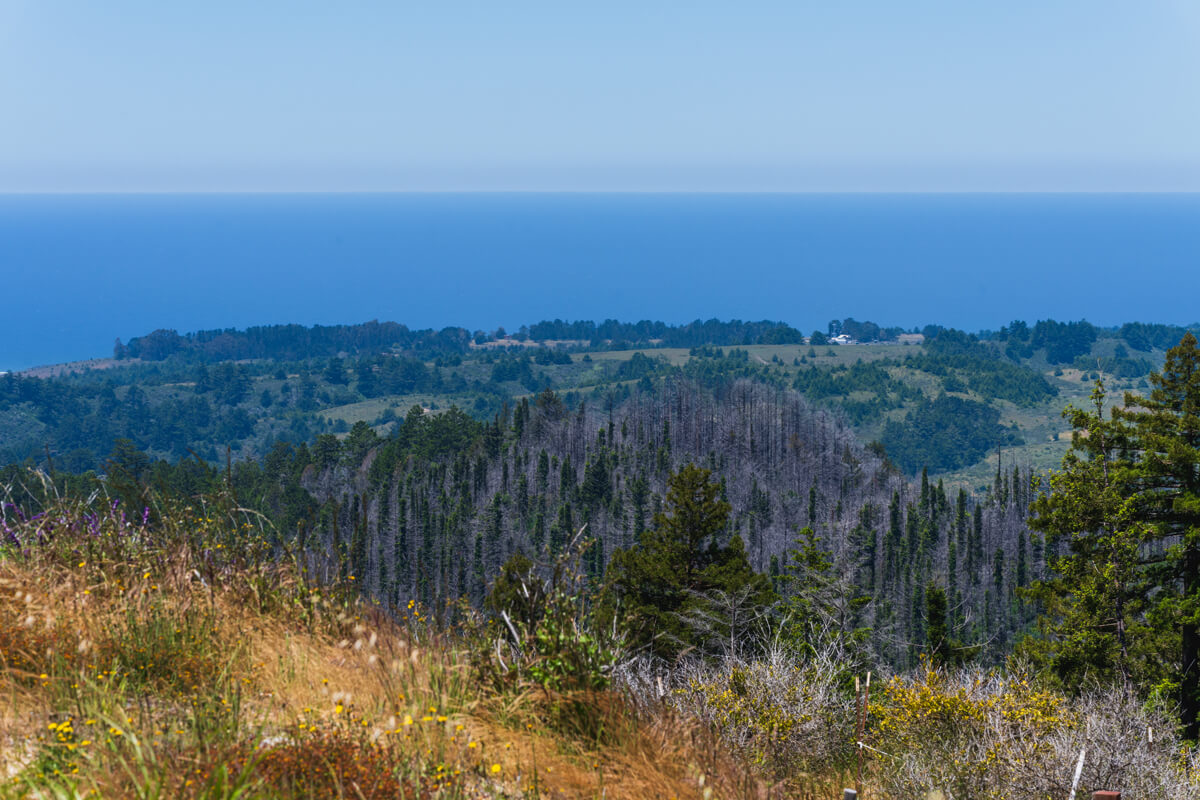
photo by Orenda Randuch
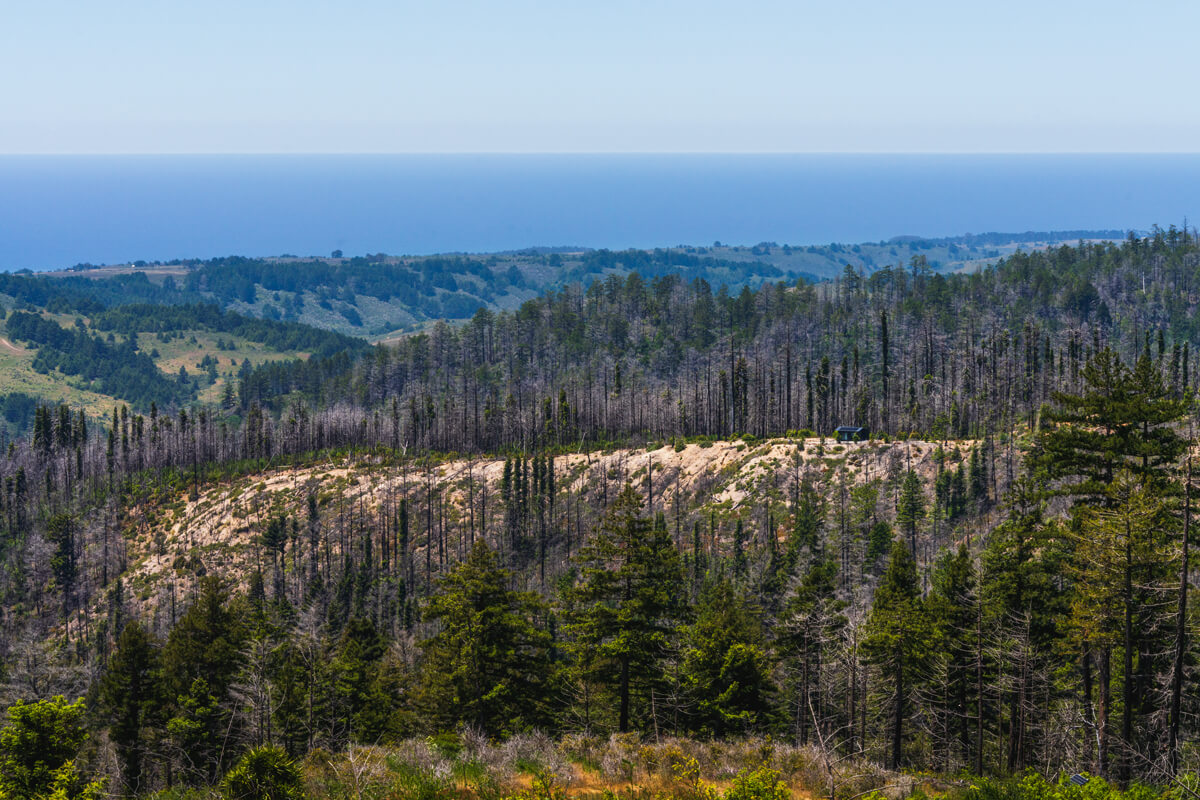
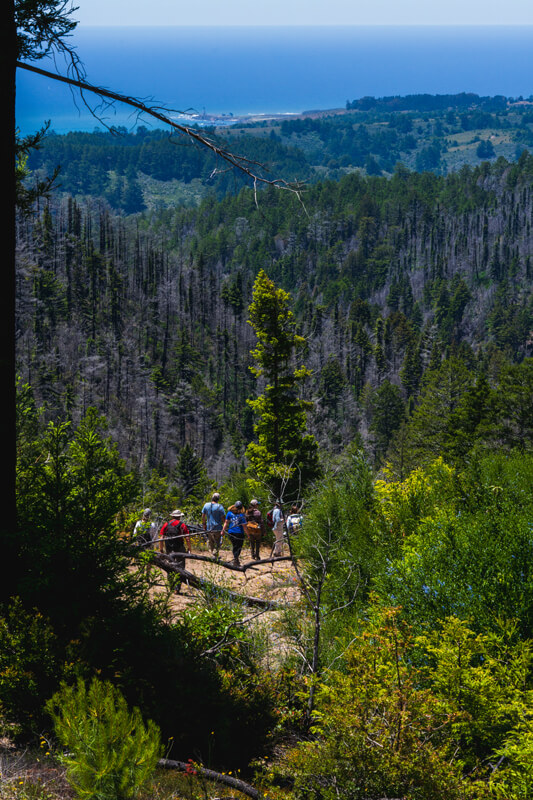
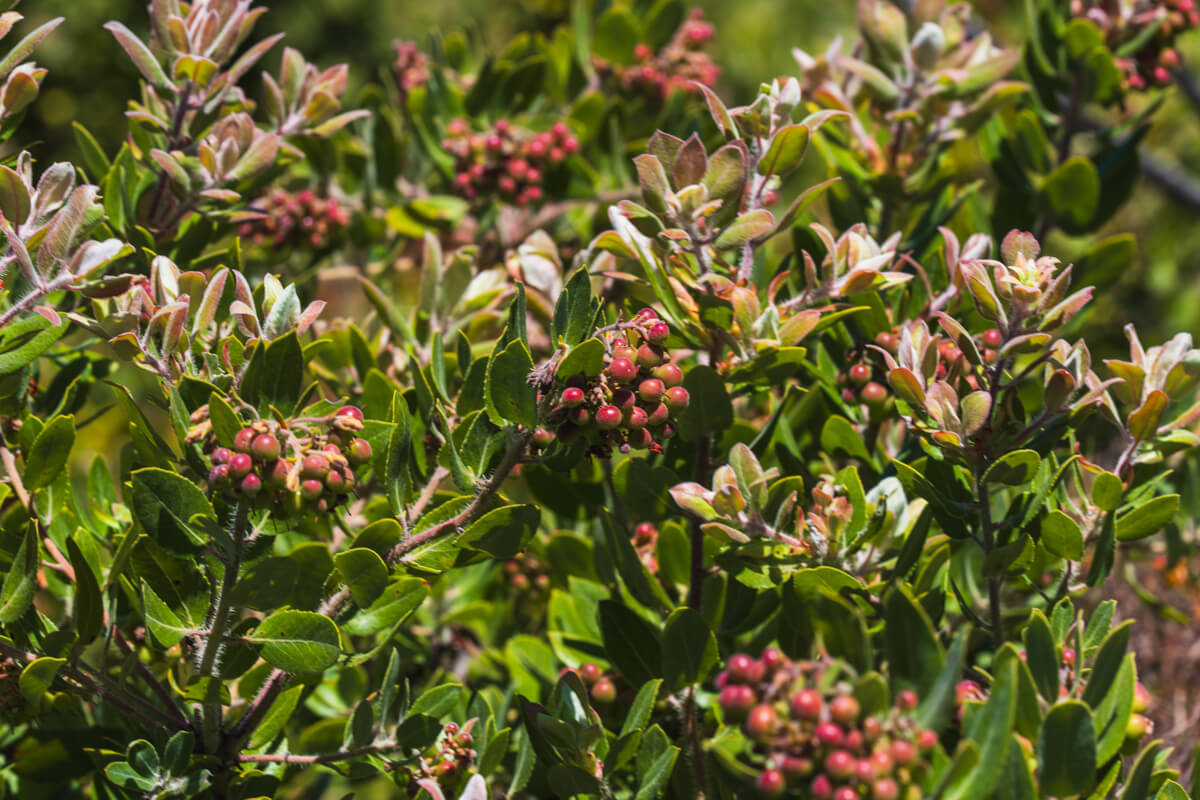
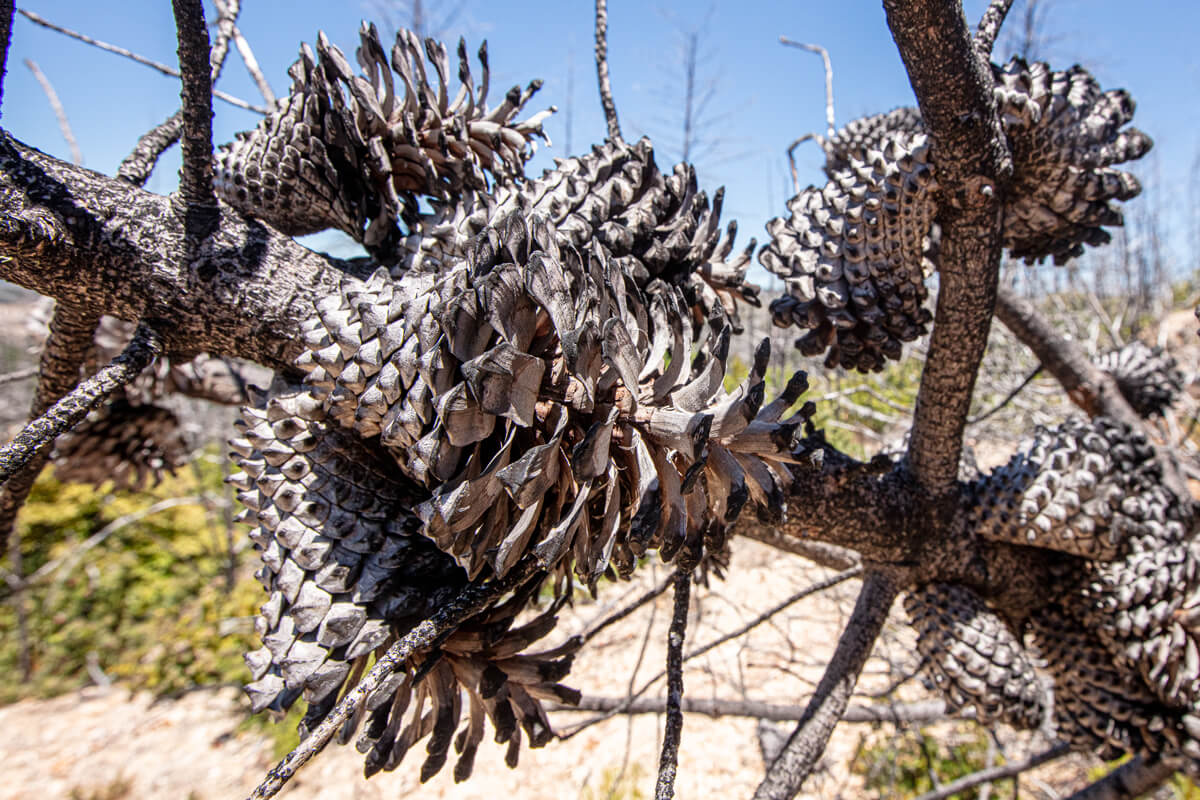
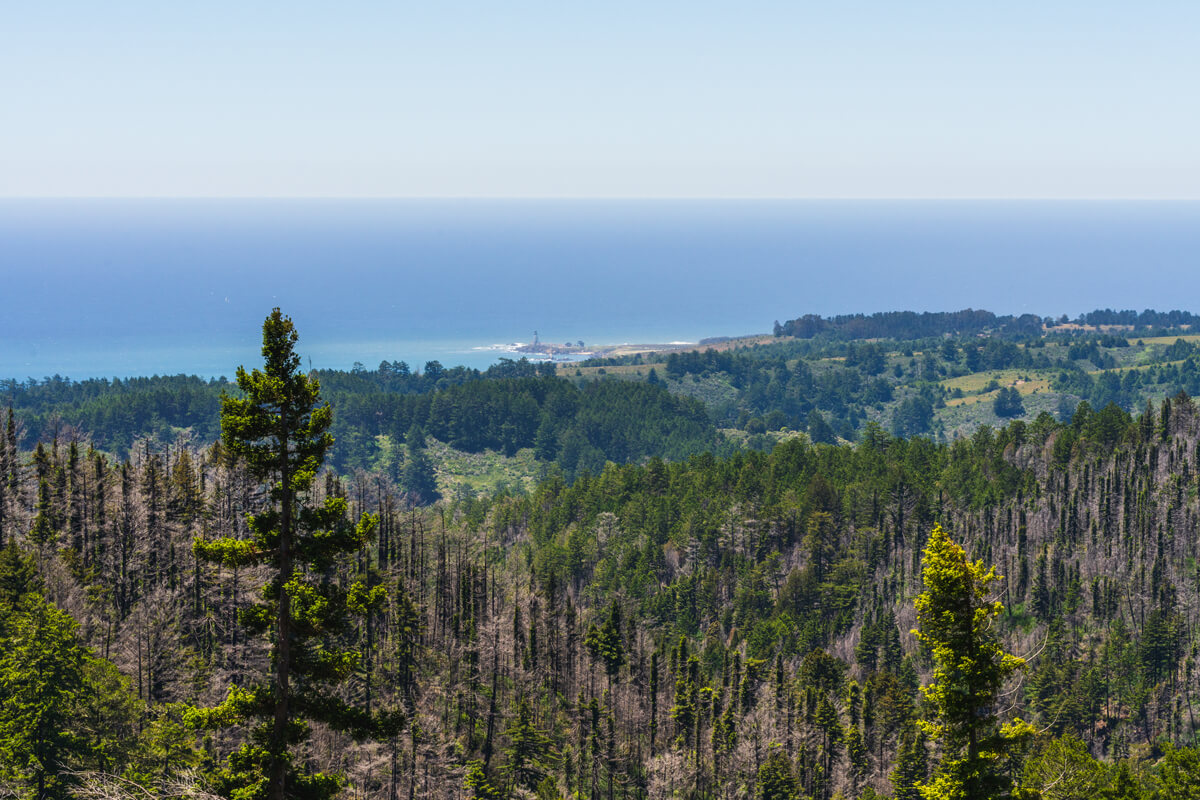
photo by Orenda Randuch
Water
The headwaters of Old Woman’s Creek spring from Año Nuevo Vista. Running through the property, Old Woman’s Creek supplies water for thirsty forests and wildlife at Año Nuevo Vista and beyond. Old Woman’s Creek feeds into Gazos Creek, a critical habitat and watershed, as well as the Pacific Ocean.
Wildlife
Endangered marbled murrelets, coho salmon, and steelhead trout rely on the Gazos Creek watershed’s route from the ocean to reproduce in the redwood forest. Marbled murrelets nest among old-growth trees while coho and steelhead spawn in creeks amongst their roots. From the redwoods to the ridges, pumas are known to traverse their large ranges along the less populated chalks, leaving their scratches in the warm sand where western fence lizards and rattlesnakes can thrive.
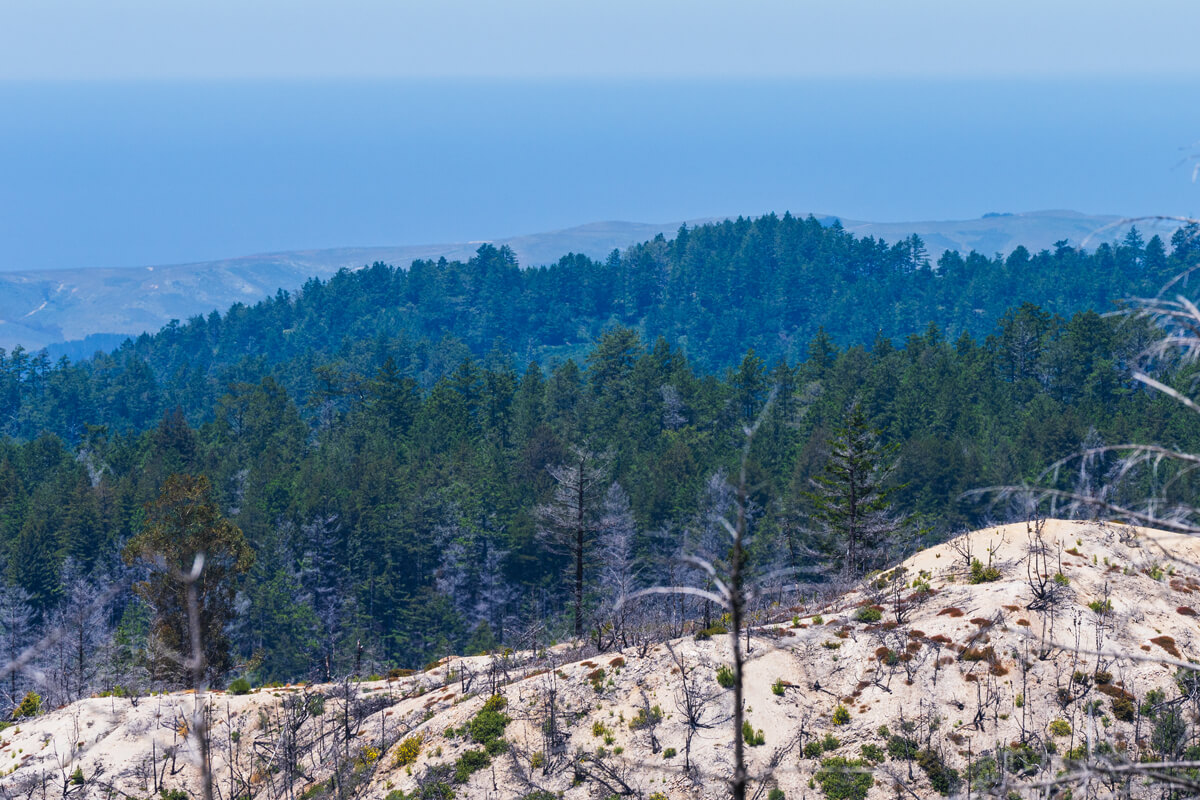
photo by Orenda Randuch
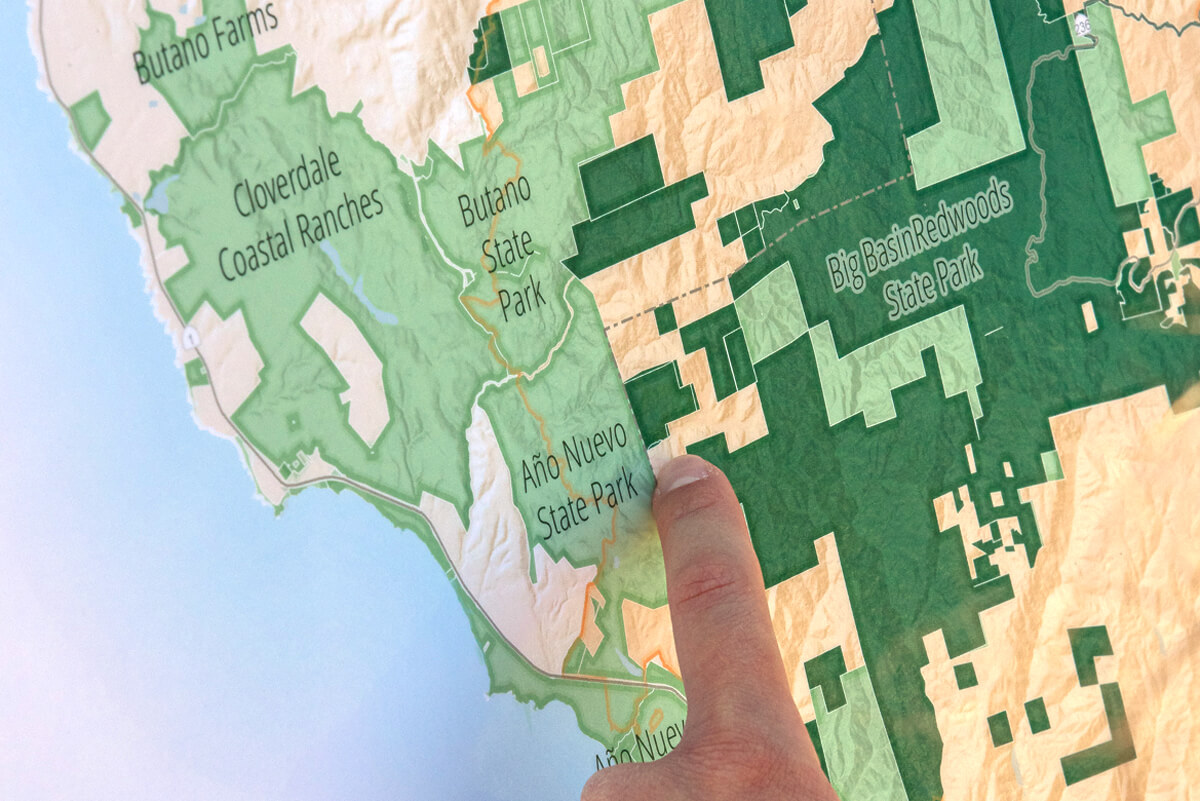
photo by Ian Bornarth
Connections
Año Nuevo Vista is located within the largest remaining intact habitat patch in the Santa Cruz mountains. Nestled between Año Nuevo State Park, Big Basin Redwoods State Park, and Butano State Park, it’s just one parcel away from Big Basin to the east and shares a border with protected Skylark Ranch to the south. Año Nuevo Vista is key to connecting protected habitats for wildlife and protected park lands for people. Landscapes fragmented by human development impact the health of forests, watersheds, and wildlife. By protecting Año Nuevo Vista’s 41 acres, we can improve connectivity between 62,000 acres of protected land.
Stewardship
If protected with your support, we can steward Año Nuevo Vista to help restore it from human impacts and make it more resilient for increased wildfires and climate change threats. After the 2020 CZU Fire killed many trees and plants, Año Nuevo Vista’s fragile soils are eroding more quickly and washing into the crucial Gazos Creek watershed. By repairing roads, improving drainage and planting native plants, endangered plants and wildlife will benefit. Cameras will be installed to monitor wildlife’s use and habitat needs. Some areas burned severely in the fire and by removing standing dead trees, fast growing invasive plants, and creating a fire break in a key location, the speed and severity of fires can be decreased—better protecting the forest’s resilience and opportunities for firefighters to manage blazes. Together, we can protect Año Nuevo Vista and care for its woods, water, and wildlife.
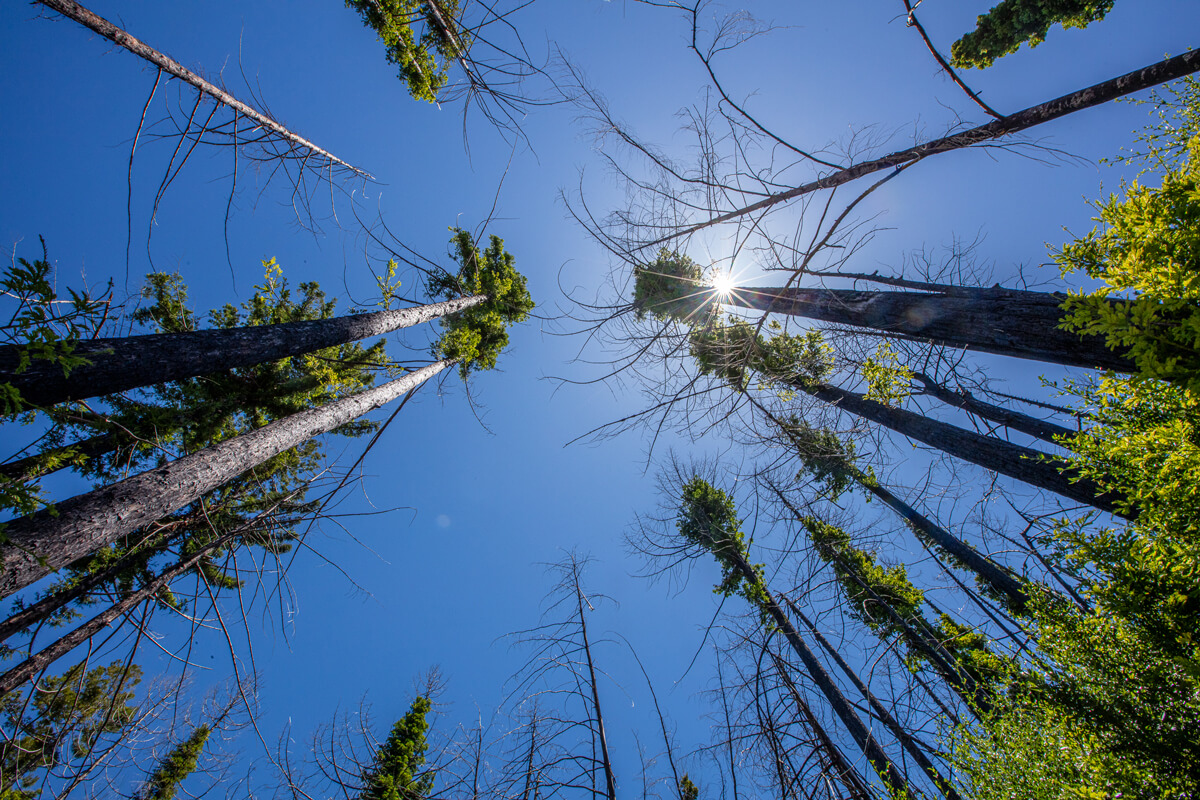
photo by Ian Bornarth
More to Explore
- See Año Nuevo Vista's chalk ridges from the Atkinson Bluff Trail with Trails Rx
- Learn more about monitoring endangered marbled murrelets
- Read more about protected land in the Gazos Creek watershed